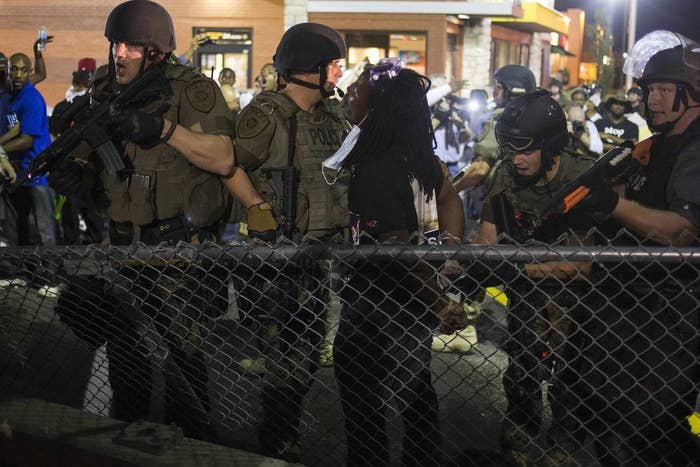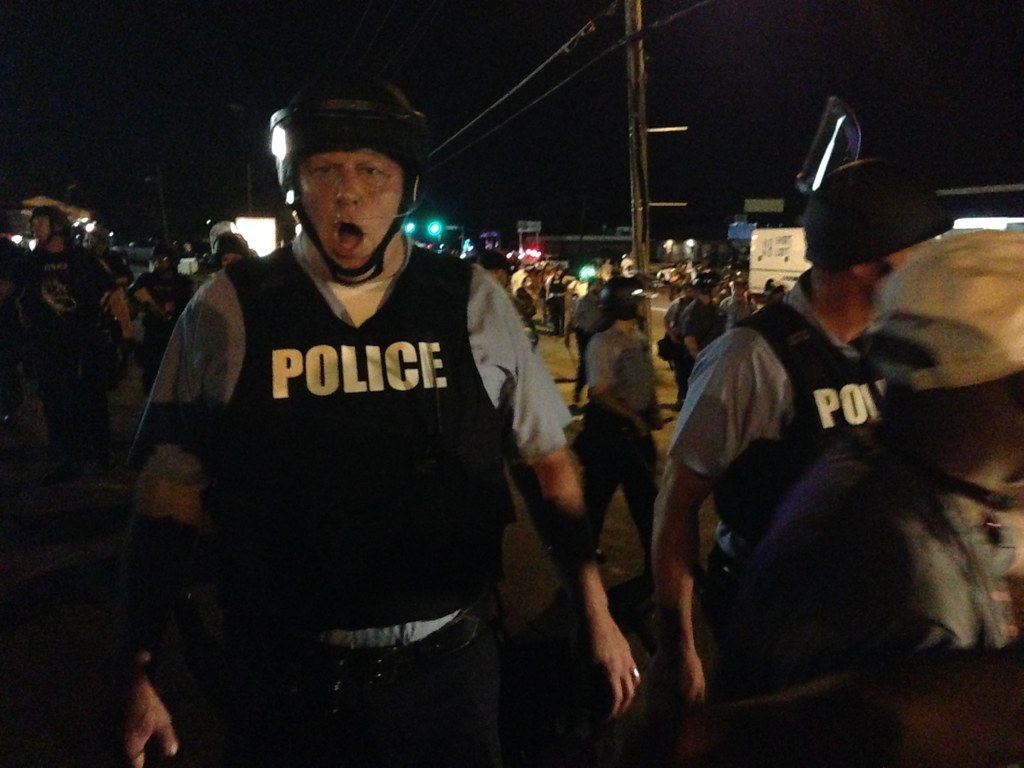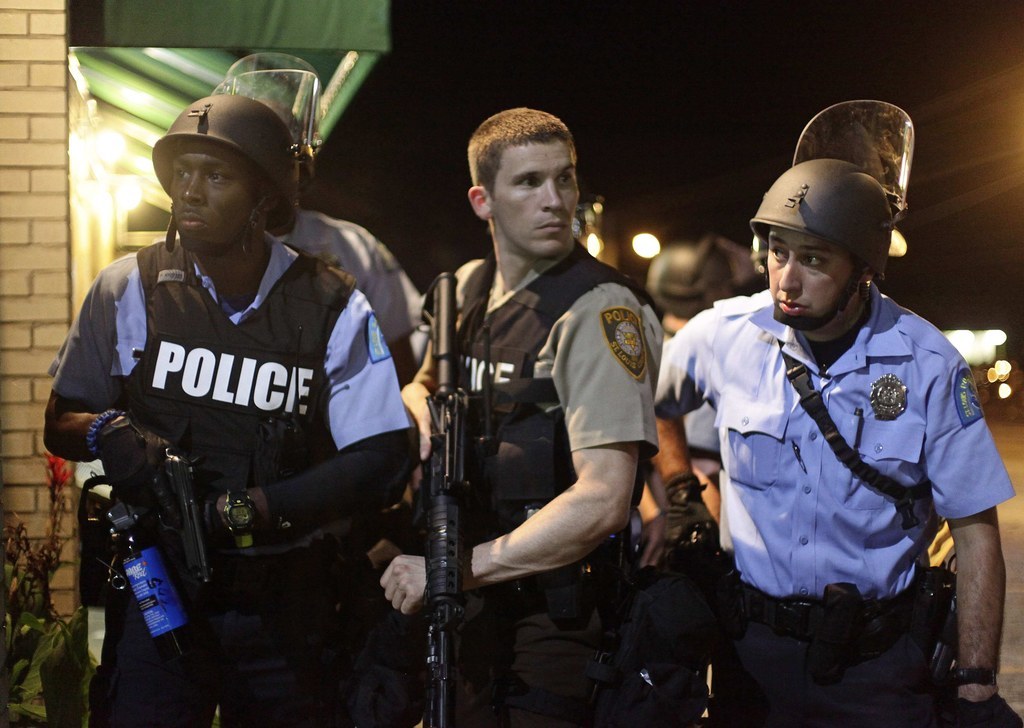
A line of police clad in battle fatigues plunged into the crowd early Wednesday morning in Ferguson.
The officers darted in quickly, cleaving the crowd in two and leaving a swirling wake of chaos. On a bullhorn, a woman who had previously led an hours-long march yelled for the protesters to stand their ground. Some stayed. Others ran. Always there were a few people walking, slowly.
Seconds later, the police stopped, and a man in a sweaty white tank top — everyone and everything was dripped with sweat Tuesday night — charged toward the line. But before he made it to the officers, other protesters grabbed him, talked him down.
Then the police started walking again. Advance. Stop. Advance. Stop. "Move!" one of the officers would shout when they came within inches of the scattering protesters and media, the barrels of their assault rifles and shotguns pointed at the ground.
In spurts, the police corralled the crowd toward the parking lots at the corner of W Florissant and Ferguson avenues. When they reached a chain-link fence, a group of St. Louis County officers pushed it down, then drove the crowd that remained up and over. As the protesters retreated, waves of chanting washed over isolated pockets. "Hands up, don't shoot." "Stand your ground." "We stay, that way."
And then, it was over. The crowd mostly dispersed, and all that was left were a handful of people — 20 or fewer — sitting in a parking lot that police said they could occupy all night.
Tuesday night and early Wednesday morning in Ferguson were all about tactics, and if the goal was to disperse the group more peacefully than in the past, those tactics worked.
Despite the intense interactions between police and protesters early Wednesday, most of Tuesday evening was peaceful. Tensions were high: When at one point police ran to arrest a man they later said was fighting, it looked like more violence might erupt. But ultimately, a handful of arrests and police staging up and down the street didn't spark violence.
As the protesters marched through the evening and the night wore on, the police began preparing to move the protesters into smaller and smaller areas. The first major push, just after 11 p.m. CT, was to clear a parking lot. People weren't happy as they retreated, but for the most part they didn't resist.
Next, police began lining the streets and the sidewalks, forming a kind of human wall that in many places forced everyone onto the sidewalks. There were gaps, but in general police began drastically reducing the amount of space protesters could use. That drove up tension within the crowd, but for the most part people retreated. The police kept squeezing the crowd into a smaller and smaller space. Apparently, every time the space got smaller, some people simply left.

The result was that police gradually whittled down the crowd, splintering people off until there was almost no one left. That produced a strikingly different scene than on nights past.
Unlike other nights, there were no clouds of tear gas and no smoke bombs late Tuesday and early Wednesday. None of the police wore gas masks. And whereas on other nights police and rioters formed opposing lines in the street, this time smaller groups of officers moved quickly into the crowd, dividing them and grabbing those they apparently saw as agitators.

For their part, the protesters also wanted a more peaceful outcome. Jeremy Phillips, who came from nearby St. Louis, told BuzzFeed afterward that he was glad that the Tuesday night protest was among the most peaceful. The confrontations that did happen angered him, but the ultimate result was essentially a best-case scenario. "That's as peaceful as it can get," he said.
At a press conference afterward, Missouri Highway Patrol Capt. Ron Johnson said the protest was indeed calmer than on previous nights; though there were 47 arrests, there were no Molotov cocktails or shootings. He insisted that a handful of "agitators" threw bottles at police, which prompted officers to moved into the crowds.
Johnson said also that a major part of Tuesday night's tactics included groups of local leaders and clergy, who circulated through the crowds during the evening and had a "calming presence."
